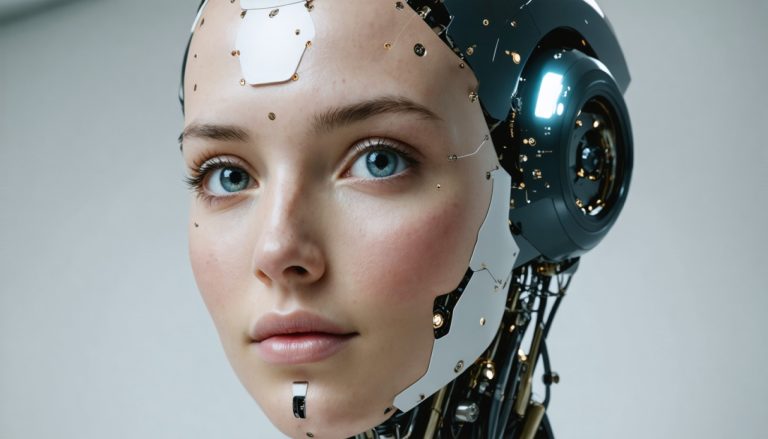
- AI is transforming China’s rice paddies, helping farmers in provinces like Jilin, Yunnan, and Hubei protect their harvests from flooding and diseases.
- AI-driven platforms enable monitoring of soil moisture levels and precise rainfall predictions, allowing for proactive crop protection.
- Sensors provide real-time data, giving farmers the chance to implement preventative measures such as drainage systems to combat flooding.
- In Hubei, AI alerts have already reduced crop losses from torrential rains, showcasing effective risk management.
- Technology empowers farmers by complementing traditional practices, enhancing livelihoods rather than replacing them.
- This development highlights AI’s potential to solve traditional challenges and improve community resilience, demonstrating a grassroots facet of AI innovation.
- China’s rural AI applications remind us that impactful technological change often begins away from the typical tech epicenters.
A new transformation brews in the rice paddies of China’s countryside, an area often overlooked in the glitzy AI narratives that dominate Silicon Valley. Here, amid the lush fields of provinces like Jilin, Yunnan, and Hubei, farmers wield artificial intelligence not as a tool for digital innovation, but as a guardian of their harvests. This quiet AI revolution, far removed from the tech giant powerhouses, is redefining what artificial intelligence can achieve.
Farmers, whose livelihoods hinge on the unpredictable whims of nature, are now harnessing AI’s potential to combat two of their biggest threats: flooding and diseases. With the help of AI-driven platforms, they monitor soil moisture levels and predict rainfall with an accuracy that was once unimaginable. Sensors embedded in the fields relay real-time data, allowing farmers to take preemptive actions to protect their crops.
In Hubei, a particularly flood-prone region, innovations are already paying off. In previous years, whole harvests could be washed away by torrential rains. Now, AI alerts farmers to imminent threats, giving them precious time to fortify their fields or implement drainage systems. This technology, combined with AI-based pest and disease identification tools, means farmers no longer walk the fields with uncertainty clouding their days.
While the AI headlines in the West focus on breakthroughs in generative models and language processing, China’s rural innovators serve as a reminder that technology’s most profound impact often occurs outside the spotlight. The quiet pioneers trudging through the muddy rice fields are proving that AI’s true value lies not just in digital transformation but in empowering communities to face age-old problems with new tools.
China’s farmers are crafting a compelling alternative narrative in the AI revolution—one where technological advancement doesn’t come at the expense of human livelihoods but instead works hand-in-hand with tradition. Here, artificial intelligence supports rather than supplants, echoing a balance of progress propelled by necessity and nurtured by the land.
Ultimately, their journey offers a refreshing vision of AI’s trajectory, where the technology helps those who might otherwise be left behind. As countries around the world grapple with the implications of AI, China’s rice paddies remind us that sometimes, the most revolutionary changes emerge not from the heart of metropolitan ingenuity, but from the fields where hands-on expertise meets forward-thinking innovation.
Unlocking the Power of AI in Agriculture: China’s Rice Paddies Revolutionize Farming
Introduction
A quiet technological revolution is taking place far from the bustling hubs of Silicon Valley. In the serene rice paddies of China’s countryside, artificial intelligence (AI) is being harnessed to revolutionize farming practices, offering promising solutions to ancient challenges. Here’s how AI is transforming agriculture in regions like Jilin, Yunnan, and Hubei, where farmers are using advanced technology to significantly improve their livelihoods.
AI-Driven Farming Innovations
1. AI as a Weather Prediction Tool:
Farmers in flood-prone areas like Hubei now use AI to predict rainfall with unprecedented accuracy, allowing them to plan and fortify their fields against potential flooding. This predictive capability helps in making crucial decisions well in advance, safeguarding entire harvests that could otherwise be lost (source: BBC).
2. Real-Time Monitoring with Sensors:
Sensors embedded in fields collect data on soil moisture levels, providing farmers with real-time analytics. This information is crucial for optimizing irrigation, ensuring crops receive just the right amount of water, thereby enhancing yield and conserving water resources.
3. AI-Based Pest and Disease Management:
AI tools are being used to identify pests and crop diseases early. These systems analyze patterns in crop health data to catch issues before they escalate, reducing dependency on pesticides and minimizing loss.
Broader Implications and Use Cases
– Economic Impact: By reducing losses due to weather and pests, AI helps increase farmers’ incomes and stabilize food production, contributing to local and national economies.
– Sustainability: AI-driven strategies promote sustainable farming by optimizing resource use and reducing environmental impact, a critical consideration as global climate patterns shift.
How-To Steps for Implementing AI in Agriculture:
1. Install Sensor Networks: Deploy soil moisture and weather sensors to gather real-time data.
2. Adopt AI Platforms: Use AI platforms for data analysis to predict weather, and to identify pests and diseases.
3. Train Farmers: Offer training programs to help farmers understand and leverage AI tools effectively.
4. Monitor and Adjust: Continuously monitor AI predictions and adjust strategies as needed for optimal outcomes.
Market Trends and Future Predictions
The integration of AI in agriculture is set to grow exponentially. By 2030, the agricultural AI market is expected to reach $4.5 billion, driven by advancements in machine learning, robotics, and IoT (source: Forbes). Expect to see increased adoption in the coming years as technology becomes more accessible and affordable for farmers worldwide.
Controversies and Limitations
Despite its promise, the use of AI in agriculture also faces challenges. Concerns regarding the cost of implementation, data privacy, and potential job displacement loom. Continuous support, innovative financing models, and robust privacy laws will be essential to address these issues.
Conclusion: Actionable Tips
For farmers and policymakers looking to adopt AI in agriculture, consider these actionable tips:
– Explore Subsidies and Grants: Look for government and NGO support for initial setup costs.
– Focus on Training: Ensure farmers have access to training resources to maximize the benefits of AI.
– Leverage Collaborative Platforms: Utilize platforms that allow for knowledge sharing and community support.
China’s rice paddies exemplify how the thoughtful application of AI can transform industries traditionally seen as low-tech. As this quiet revolution continues, it sets a precedent for innovative, sustainable farming practices that can be replicated worldwide.



